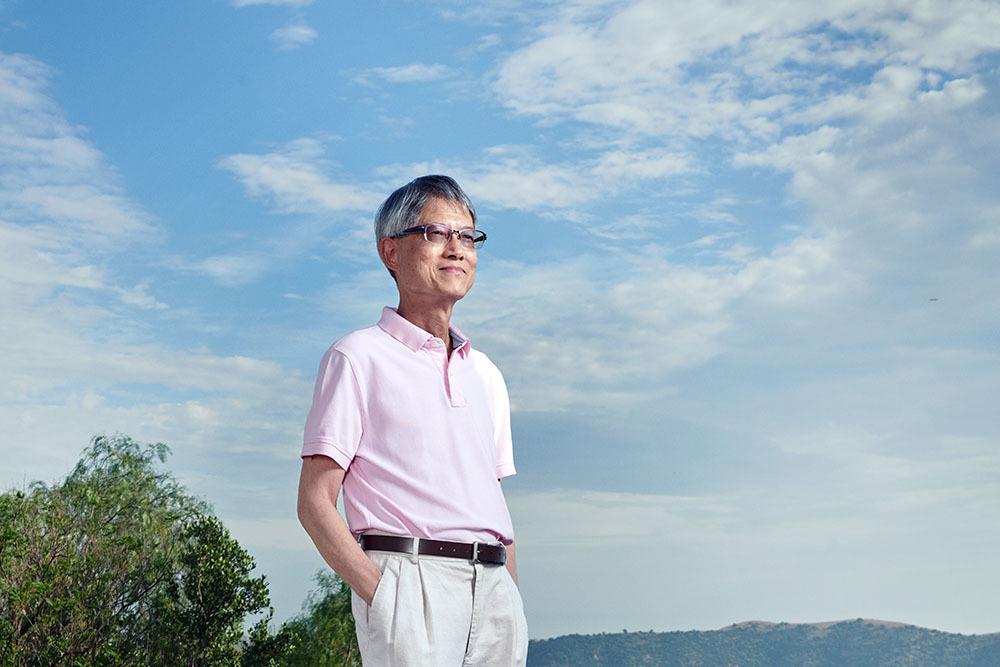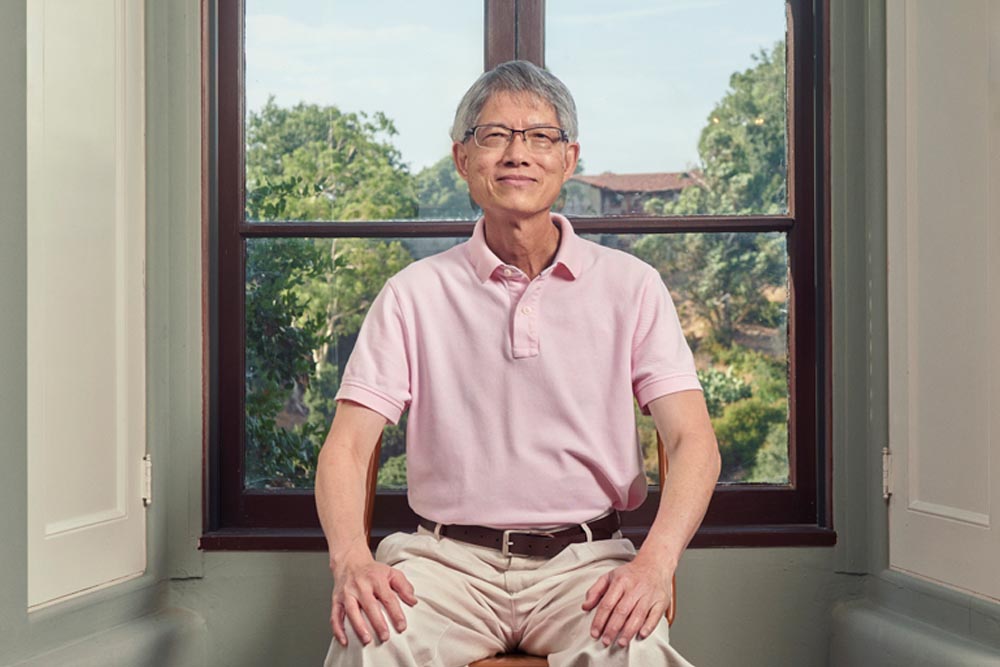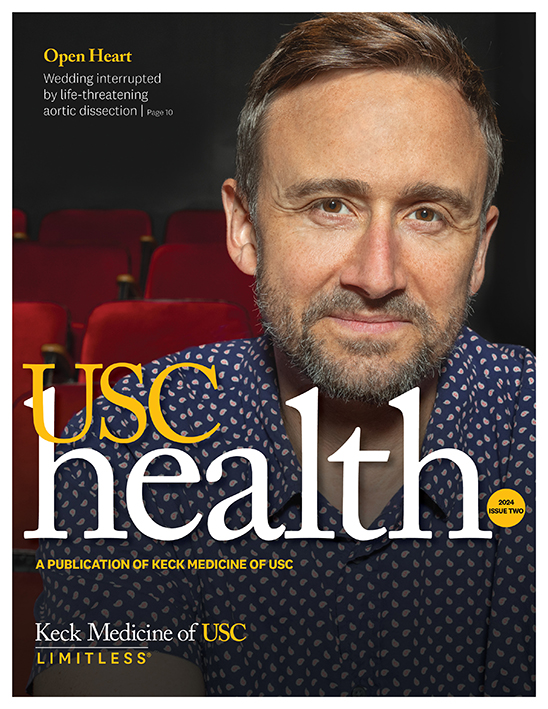
Sudden hearing loss brought Danny Kwok to Keck Medicine of USC’s Arcadia clinic, where an otolaryngologist’s deep knowledge of his patient population inspired an early diagnosis of nasopharyngeal carcinoma.
Danny Kwok was a little surprised when, during his first office visit with Keck Medicine of USC otolaryngologist Kevin Hur, MD, one of Dr. Hur’s first questions for Danny was where he was born.
“I didn’t know what that had to do with my ear,” says Danny, who had lost hearing in one ear several weeks before seeing Dr. Hur, “but I told him that I was born in Hong Kong and moved to the United States 40 years ago.”
That was pretty much all Dr. Hur needed to know. He suspected that the source of Danny’s hearing loss might not be in his ear.
Using an endoscope to look in his patient’s nose, Dr. Hur identified the culprit: a tumor on the left side of Danny’s nose that had also caused a buildup of fluid around his eardrum.
The type of cancer, called nasopharyngeal carcinoma, is extremely rare in the general population in the United States.
How does cultural background affect cancer risk?
Asian immigrants from southern China and Southeast Asia have an elevated risk of developing nasopharyngeal carcinoma, which is why Dr. Hur asked Danny about his birthplace.
Unfortunately, for some patients, nasopharyngeal carcinoma can be relatively tough to diagnose. People often develop symptoms such as hearing loss, ringing in the ears, headaches or nasal congestion — all of which can be confused with ear or sinus infections.
As a result, nasopharyngeal carcinoma is typically found when it is in an advanced stage.
Dr. Hur, an endoscopic sinus and skull base surgeon specializing in the treatment of sinonasal disease, typically checks for nasopharyngeal cancer if patients have other head and neck symptoms and a history of immigration from this area of Asia.
“People from that region are 10 times more likely than other people in the U.S. to develop this cancer,” says Dr. Hur, who practices at Keck Medicine’s Arcadia clinic. “And when it comes to any cancer, it is important to get a diagnosis as early as possible.”

Early intervention for nasopharyngeal carcinoma
Because Dr. Hur knew what to look for, Danny got a proper diagnosis early, when his cancer was not very advanced. On that first visit, Danny also had a CT scan that confirmed the presence of a tumor and mapped out its exact location.
Danny, a San Dimas resident, began treatment after just a few weeks at Keck Medicine’s Arcadia clinic with USC Norris Comprehensive Cancer Center radiation oncologist Jennifer Ho, MD, and medical oncologist Jenny Zhou, MD.
I am so grateful to Dr. Hur for figuring this out.
Danny Kwok, patient, USC Norris Comprehensive Cancer Center
Ultimately, he underwent about six months of chemotherapy and radiation, which he completed at the end of 2021.
Looking back, Danny says he is grateful to the team of doctors who treated his illness and put his mind at ease.
“They were patient with me and listened to me,” Danny says. “I asked a lot of questions, and nobody ever rushed me. At the end of my visits, they always made sure they answered my concerns.”
Early-stage cancer treatment leads to good prognosis
Danny still has a few minor side effects from the radiation, including dry mouth, but his hearing is fine, and the side effects are improving with time.
Most importantly, Danny has been cancer-free since his treatment. Dr. Hur notes that his patient’s prognosis remains good, given that the cancer was found at a relatively early stage.
Understanding the unique risk factors and health disparities that affect patients of Asian descent is one key to delivering the best health care, says Dr. Hur, who cites Danny’s health journey — from diagnosis to treatment — as proof.
“I am so grateful to Dr. Hur for figuring this out,” Danny says, “and I hope that all Asian people, if they have symptoms like mine, can find a doctor like him.”
Topics


